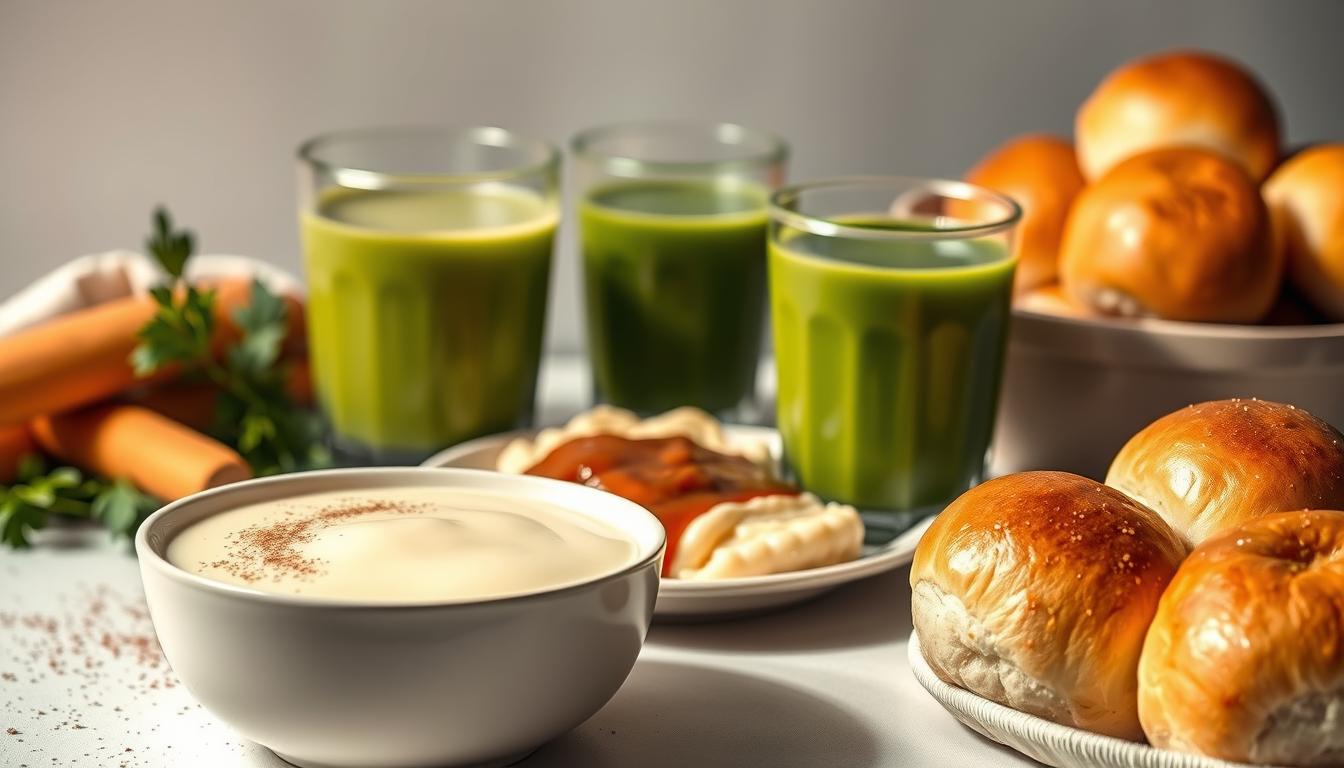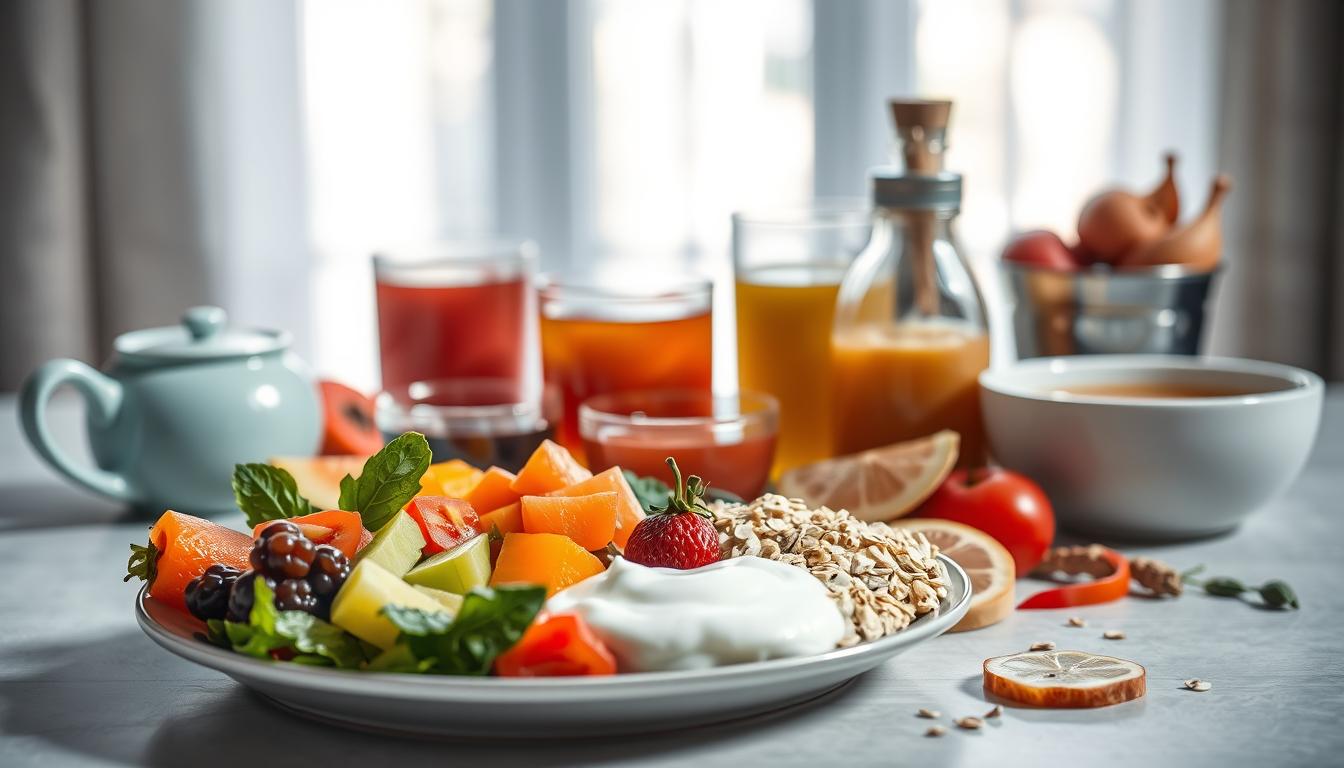Recovering from oral surgery can be challenging, but with the right diet, the process can be significantly eased. Consuming the appropriate nutrient-rich foods is crucial for healing and minimizing discomfort.
After undergoing dental surgery, it’s essential to opt for foods that are gentle on your mouth and digestive system. The right foods can help reduce pain and support the healing process.
Eating the right foods after oral surgery is vital for a smooth and speedy recovery. In this article, we’ll explore the top 10 foods that can help you heal easily and effectively.
Key Takeaways
- Eat nutrient-rich foods for healing
- Opt for gentle foods on your mouth and digestive system
- Reduce pain with the right diet
- Support the healing process with appropriate foods
- Choose foods that are easy to consume after surgery
Understanding Your Post-Dental Surgery Diet Needs
A well-planned post dental surgery diet is vital for healing and minimizing discomfort. After surgery, your mouth is sensitive, and eating the right foods can significantly impact your recovery. A liquid diet after dental surgery is often recommended initially, as it is gentle on the mouth and digestive system. This diet helps prevent discomfort and promotes healing. Choosing the right foods is crucial for a smooth recovery.
Top 10 Soft Foods After Dental Surgery
Recovering from dental surgery requires a diet of soft, gentle foods that won’t irritate the mouth or disrupt the healing process. The following list includes the top 10 soft foods that are not only easy to eat but also provide essential nutrients for a speedy recovery.
1. Yogurt and Smoothies
Yogurt and smoothies are excellent options after dental surgery due to their soft texture and high nutritional value. They provide cold comfort for sore gums and can be enriched with protein for added recovery benefits.
Cold Comfort for Sore Gums
The cold temperature of yogurt and smoothies can help soothe sore gums, reducing discomfort and inflammation.
Protein-Rich Options
Adding protein-rich ingredients like Greek yogurt or protein powder can enhance the nutritional value of your smoothies, supporting the healing process.
2. Mashed Potatoes
Mashed potatoes are a comforting and filling option after dental surgery. They are easy to chew and swallow, making them an ideal choice.
Comforting Carbohydrates
Mashed potatoes provide a good source of carbohydrates, which are essential for energy during the recovery period.
Adding Nutrients Without Texture
You can add nutrients to mashed potatoes by incorporating soft, cooked vegetables or gravy, enhancing their nutritional value without adding texture.
3. Scrambled Eggs
Scrambled eggs are a great source of protein, which is vital for healing after dental surgery. They are also very soft and easy to eat.
Protein-Packed Recovery Food
The high protein content in scrambled eggs supports the body’s healing process, helping you recover more efficiently.
Soft Cooking Techniques
Cooking eggs until they are very soft ensures they are easy to chew and swallow, minimizing discomfort.
4. Oatmeal and Cream of Wheat
Oatmeal and Cream of Wheat are warm, comforting breakfast options that are gentle on the mouth. They are rich in fiber and can be easily customized with various toppings.
Fiber-Rich Morning Options
Oatmeal is particularly high in fiber, which can help maintain digestive health during recovery.
Temperature Considerations
It’s essential to let oatmeal or Cream of Wheat cool down to a comfortable temperature before eating to avoid irritating the surgical site.
5. Soup and Broths
Soups and broths are excellent for hydration and can be packed with nutrients. They are also very easy to consume after dental surgery.
Hydration and Nutrition
Clear broths and soups can provide essential fluids and electrolytes, helping to keep you hydrated during recovery.
Avoiding Chunks and Seeds
Ensure that soups are blended or strained to remove any chunks or seeds that could cause discomfort or irritation.
6. Applesauce and Fruit Purees
Applesauce and other fruit purees are natural, easy-to-eat options that provide a good source of vitamins and minerals.
Natural Sweetness Without Chewing
Fruit purees offer a sweet treat without the need for chewing, making them an ideal snack after dental surgery.
Making Your Own Purees
You can easily make your own fruit purees at home by blending cooked or raw fruits in a blender until smooth.
7. Ice Cream and Pudding
Ice cream and pudding are soothing cold treats that can be very comforting after dental surgery. They are also easy to eat.
Soothing Cold Treats
The cold temperature of ice cream and pudding can help reduce swelling and ease pain.
Dairy-Free Alternatives
For those with dairy intolerance, there are dairy-free alternatives made from coconut milk, almond milk, or soy milk.
8. Soft Cooked Pasta
Soft cooked pasta is another gentle food option that can be paired with a variety of soft sauces.
Overcooking for Easier Eating
Cooking pasta until it’s very soft makes it easier to eat without causing discomfort.
Sauce Considerations
Choose soft, smooth sauces like cream or cheese sauces to accompany your pasta, avoiding chunky or spicy options.
9. Cottage Cheese and Ricotta
Cottage cheese and ricotta are high in protein and calcium, supporting healing and oral health.
Calcium for Healing
The calcium in cottage cheese and ricotta can aid in the healing process and support bone health.
Pairing with Soft Fruits
Combining cottage cheese or ricotta with soft fruits like bananas or applesauce can add natural sweetness and extra nutrients.
10. Avocado
Avocados are rich in healthy fats and are very versatile, making them an excellent choice after dental surgery.
Healthy Fats for Recovery
The healthy fats in avocados support overall health and can aid in the recovery process.
Simple Preparation Ideas
Avocados can be mashed or blended into smoothies, providing a nutritious and easy-to-eat meal or snack.
Foods to Avoid During Dental Recovery
Knowing what to avoid in your diet can significantly impact your oral surgery recovery. Certain foods can be harmful or uncomfortable to consume after surgery, potentially complicating the healing process.
Avoid consuming hard, crunchy, or spicy foods as they can irritate the surgical site or be difficult to chew. Examples include nuts, chips, and hot peppers. Additionally, sticky or chewy foods like caramel or gum can dislodge blood clots or stitches, hindering recovery.
When to Transition Back to Normal Foods
Understanding the right time to resume your regular eating habits post-dental surgery is vital. Generally, it’s recommended to stick to soft foods after dental surgery for a few days to a week.
The readiness to transition back to normal foods can be gauged by the reduction in pain and discomfort, and the ability to chew without difficulty. It’s essential to follow a dental procedure meal plan that gradually introduces harder foods.
| Day | Food Type | Examples |
|---|---|---|
| 1-3 | Liquid/Soft | Yogurt, Soups |
| 4-6 | Soft/Mashed | Mashed Potatoes, Scrambled Eggs |
| 7+ | Normal | Gradually introduce regular foods |
Conclusion
A liquid diet after dental surgery and subsequent easy to chew foods play a crucial role in ensuring a smooth and comfortable recovery. By incorporating the recommended soft foods into your diet, you can minimize discomfort and promote healing.
Stick to the suggested foods, avoid hard or crunchy items, and transition back to your normal diet gradually. With a little patience and the right nutrition, you’ll be back to your normal routine in no time, feeling refreshed and revitalized.
FAQ
What are the best soft foods to eat after dental surgery?
The best soft foods to eat after dental surgery include yogurt, smoothies, mashed potatoes, scrambled eggs, oatmeal, soup, applesauce, ice cream, soft cooked pasta, cottage cheese, and avocado. These foods are gentle on the mouth and provide essential nutrients for recovery.
How long should I stick to a liquid diet after oral surgery?
It’s generally recommended to follow a liquid diet for the first 24 to 48 hours after oral surgery. After this period, you can gradually introduce soft foods into your diet, avoiding anything too hot, cold, or difficult to chew.
Can I eat ice cream after dental surgery?
Yes, ice cream can be a soothing and comforting food after dental surgery. Opt for cold, creamy flavors and avoid any mix-ins or toppings that could irritate the surgical site or be difficult to chew.
Are there any foods I should avoid during dental recovery?
Yes, during dental recovery, it’s best to avoid spicy, acidic, or sharp foods, as well as anything that’s too hot or cold. You should also avoid crunchy, chewy, or hard foods like nuts, chips, or raw vegetables, as they can cause discomfort or complicate the healing process.
How do I know when it’s safe to transition back to my normal diet after dental surgery?
You can transition back to your normal diet when you feel comfortable doing so, usually within a few days to a week after surgery. Start by introducing soft, easy-to-chew foods and gradually move back to your regular diet, paying attention to your body’s signals and any discomfort.
Can I have coffee or tea after dental surgery?
It’s best to avoid very hot beverages like coffee and tea for the first few days after dental surgery, as they can dislodge the blood clot or irritate the surgical site. If you must have them, let them cool down a bit before consumption.
What are some easy-to-prepare meal ideas for post-dental surgery?
Some easy meal ideas include blending soups or making smoothies with your favorite fruits and yogurt. You can also prepare mashed potatoes, scrambled eggs, or oatmeal, which are all gentle on the mouth and require minimal chewing.
Can I eat soft cooked pasta after dental surgery?
Yes, soft cooked pasta is a good option after dental surgery. Make sure it’s overcooked to avoid any chewing difficulties, and be cautious with the sauces you choose, avoiding anything too spicy or acidic.




